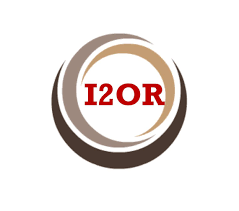Charting the Course: Overcoming Hurdles in the Journey towards Developed India
Keywords:
Corruption, Developed India, Disparities, Environmental Problems, Inclusive GrowthAbstract
The ambitious goal of a "Developed India" by 2047 will require genuine dedication and active engagement from all citizens. On the international economic scene, India has achieved great progress, but enduring social and economic inequalities remain a serious obstacle. One alarming sign of these disparities is the large percentage of people who are still under the poverty threshold level. The lack of qualified workers makes this situation much more difficult. COVID-19 brought to light the shortcomings of India's healthcare system, especially in villages and isolated regions, demonstrating long-standing difficulties in delivering high-quality, easily accessible healthcare. Furthermore, environmental problems like depletion of ozone and declining biodiversity have been brought on by unrestrained development and accelerated commercialisation.
In addition to endangering ecological equilibrium, this environmental deterioration also poses a hazard to livelihood and public health. Trust among the public and efficient administration are further hampered by governance issues, especially corruption. This analysis, which is based on secondary data, aims to highlight the challenges facing India as it moves towards development. There are encouraging paths forward despite these obstacles. India has many advantages, including a large, active youth population, attention to green energy, and the digital revolution and initiatives. By combining these resources, India can become a developed nation by 2047, resulting in inclusive growth.
References
• Chopra, R., & Bisht, C. (2024). Charting the Course towards Viksit Bharat: A Comprehensive Exploration of India's Path to Development. Educational Administration: Theory and Practice, 30(5), 9023-9033.
• Desai, N. (2024). The real challenge of Viksit Bharat@2047. Retrieved on 13.11.2024 from https://www.business-standard.com/opinion/columns/the-real-challenge-of-viksit-bharat-2047-124071501249_1.html
• https://economictimes.indiatimes.com/news/economy/policy/without-development-of-rural-india-difficult-to-achieve-viksit-bharat-goal-by-2047-cag/articleshow/113846030.cms?utm_source=contentofinterest&utm_medium=text&utm_campaign=cppst, accessed on 13.11.2024
• https://www.nextias.com/ca/editorial-analysis/10-02-2024/idea-of-viksit-bharat, accessed on 13.11.2024
• Kumar, S., & Sirohi, D. (2024). Fostering Fem-Economics: Navigating Indian Women Investment Vision for Viksit Bharat 2047. International Journal of Humanities Social Science and Management, 4(2), 871-876.
• Mundhe, E. (2024). Viksit Bharat@ 2047: Pathways to a Developed India. Retrieved on 07.08.2024 from https://www.researchgate.net/profile/Eknath-Mundhe/publication/380824233_VIKSIT_BHARAT_2047_PATHWAYS_TO_A_DEVELOPED_INDIA/links/66503e9abc86444c72fd78a0/VIKSIT-BHARAT-2047-PATHWAYS-TO-A-DEVELOPED-INDIA.pdf#page=82
• Pandya, V. (2024). From Aspiration to Reality: The Indispensable Role of Academia in Achieving Viksit Bharat 2047. Vidhyayana, 9(si2).
• Satyanarayana, M. V. V., & Rao, B. V. (2023). What is a Developed Country a Status India is Aiming to Achieve by 2047? International Journal for Multidisciplinary Research, 5(6), 1-12.
• Singh, N. R. (2024). Inclusive and Viksit Bharat 2047: A Proactive Strategy to a Better Future. Educational Administration: Theory and Practice, 30(5), 9116-9122.
• Thakkar, M. N. R. (2024). A Vision for 2047: The Indian Knowledge System and Education for a Viksit Bharat. Vidhyayana, 9(si2).
Downloads
Published
How to Cite
Issue
Section
License
Copyright (c) 2024 Utpal Sarkar, Asim Kumar Roy, CMA Dr. Samyabrata Das

This work is licensed under a Creative Commons Attribution 4.0 International License.
Research Articles in 'Journal of Academic Advancement' are Open Access articles published under the Creative Commons CC BY License Creative Commons Attribution 4.0 International License http://creativecommons.org/licenses/by/4.0/. This license allows you to share – copy and redistribute the material in any medium or format. Adapt – remix, transform, and build upon the material for any purpose, even commercially.






